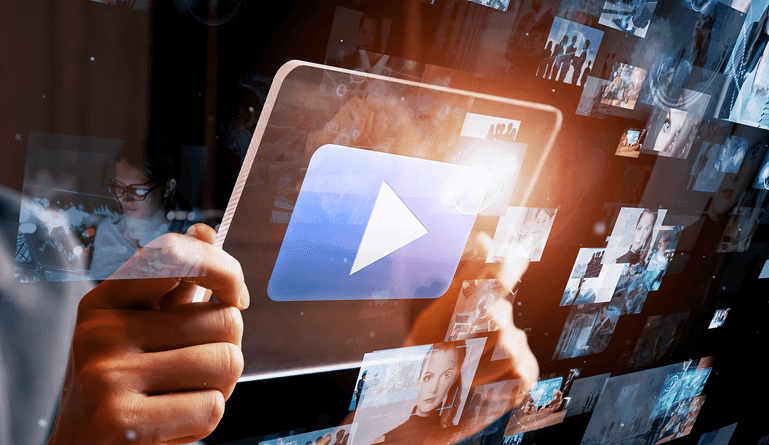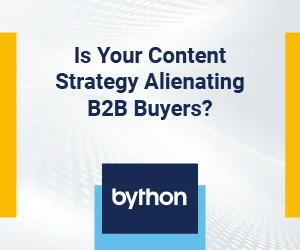The conversation around AI-driven content creation in marketing is now moving from text to visuals. That is because visual content – videos, static images, screenshots in tutorials, GIFs, and infographics – has a far more intense and lasting impact on the audience than text alone. The power of visuals is so great that e-commerce marketing reduces returns and saves reverse logistics costs.
This article discusses how marketers can leverage the power of AI-driven content generation for visuals and benefit from compelling, eye-catching marketingcontent.
The Evolution of Visual Content in Marketing
Traditionally, creating visuals was a time and effort-intensive process, almost impossible to recreate at scale. Companies relied on highly skilled designers and expensive agencies to drive their visual content marketing campaigns. This strategy was out of reach for most businesses, barring a few major brands or companies specializing in monetizing visual content.
At the same time, the rise of visual-first social media platforms like Instagram and TikTok, or even slideshows and visual ads on LinkedIn, means that markets must keep visual content in their arsenal.
Fast forward to 2023, and AI-driven content creation has completely changed this paradigm. Creating original visual content from scratch with just a few natural language instructions is impossible. Thanks to advancements in large language models (LLMs) and object recognition, the results of AI-driven content creation are almost identical to human creative output.
Understanding AI in Visual Content Creation: How Does it Work?
All types of AI-driven content creation, including visuals, use generative artificial intelligence (GenAI) to work. To explain it, GenAI is a deep learning-based AI algorithm that learns the patterns and structures of input training data and can assimilate gigabytes and terabytes of information. It is then presented to the user (marketer) as a drag-and-drop tool or a natural language chat interface.
When you type in an instruction, the GenAI model refers to everything it has learned to develop an original but derivative response. What you get as an output, be it an article headline, ad copy, or a uniquely designed image – that’s the result of AI-driven content creation.
In practice, the instructions marketers give can vary in complexity and sophistication, leading to some awe-inspiring AI-generated visuals.
Primarily, the AI-driven visual content creation process works in one of two ways:
-
Visual generators:
Here, you give the AI a concept or a set of elements to include in the graphic. You also specify the style – e.g., Andy Warhol-like pop art or a Renaissance-style painting. The AI tool does the rest and combines it to create a non-plagiarized image. You also have video generators that enable AI-driven content creation from a script and AI avatars.
-
Visual editors:
These are video and image editing tools that use generative AI as a critical part of the design process. For example, Adobe Firefly is completely GenAI-based, allowing marketers to design and superimpose new elements onto an existing image or video. Photoshop, too, uses generative AI to make complex edits simpler.
Practical Applications of AI in Visual Content Marketing
We are witnessing an explosion in generative AI visual tools such as MidJourney, Dall-E, Runway, Firefly, and others. This is because there is substantial demand for AI-driven content creation with several practical applications:
-
Content generation and curation
The lowest-hanging fruit in this space is end-to-end visual content creation using AI. Companies can use this technology to repurpose content for different platforms – for example, creating YouTube videos from their most popular blogs. You could also design experimental creatives and conduct A/B testing within limited timelines, thanks to AI-driven content creation.
A slightly more complex but highly effective use case is AI-driven recommendation engines that suggest visual content to users. Netflix is a good example, using AI to understand the user’s “mood” and thematic preference to recommend the most engaging content. E-commerce platforms like Amazon also use this technology to recommend similar-looking products.
-
Personalization and targeting
Artificial intelligence can help hyper-personalize the content that users see at a lightning pace. Imagine an ad creative that changes its design, look and feel, to match dynamic user behavior. Or, think of augmented reality or virtual reality marketing promotion, where the user’s demographic data determines what they see in real-time.
Granted, we are a few years away from this degree of personalization and agility, primarily because of the high computing nature of GenAI.
However, artificial intelligence is already being used widely in visual ad targeting through integrations with programmatic advertising technologies. The AI uses data on user behavior, demographics, and preferences to optimize the exact visual experience, changing elements like the dimensions and placement of visuals.
-
Analysis and optimization
Visuals are an essential component of user-generated content. A brand’s organic followers and advocates are likely to share frequent images and videos with the brand’s mention but without explicitly mentioning it in the image caption, post, or title. Artificial intelligence lets you bring all of this activity under the ambit of brand tracking, monitoring, and analysis.
This type of visual AI tool uses image recognition to understand and flag every instance where a brand is mentioned visually (in an image, video, or GIF) and not just via text.
Some artificial intelligence content marketing tools can analyze large amounts of performance data to generate precise recommendations on what’s doing well and where you could improve. It visualizes trends instead of marketers going through rows and columns of tabular data, making it easier to act on the insights.
Best Practices for Integrating AI into Your Visual Content Strategy
Despite apparent benefits, AI-driven content generation has its challenges. There’s a question of ethics when AI images mimic an artist’s style too closely. AI can also struggle when recreating the nuances of particular visual elements – for example, a human being’s fingers and eyes. To adopt AI as part of your visual content strategy with confidence, it is advisable to follow a few best practices:
- Establish clear goals and objectives: Given the experimental nature of GenAI in enterprise applications, it is easy to go wrong with AI-generated visuals. Define goals like user engagement rates to ensure you stay on track.
- Select the right AI tools and technologies: There’s currently a proliferation of AI-driven content generation tools in the market. Conduct thorough research and due diligence, collaborating with all your organizational stakeholders (marketing and IT) before investing.
- Ensure data privacy and security: AI tools ingest vast amounts of data. Companies need to have protocols in place that will govern the sharing of intellectual property with AI. Also, access to the tool(s) must be protected to prevent fraud and misuse.
- Upskill for GenAI usage: AI-driven content generation isn’t just another productivity hack; it is a large-scale cultural shift in how an organization views creative processes and values human work. Train marketers and other employees in GenAI and invest in change management.
- Please set up an ethics committee: As companies adopt AI-driven content generation, they will likely face ethical questions at some point in time. Have response mechanisms in place to deal with such issues while maintaining brand reputation.
The Future of AI in Visual Content Marketing
Artificial intelligence is poised to transform the field of content marketing. Most companies are looking to experiment sporadically with standalone visual AI SaaS solutions.
However, the future lies in holistic content strategies informed by AI at strategic junctures. Instead of just reacting to the AI trend, organizational leaders must explore how artificial intelligence and GenAI can seamlessly fit into their brand ethos and marketing workflows. They also need protocols and policies to communicate their use of AI-generated visuals to a larger audience.
Next, read the whitepaper on how visual and social content increase online sales. If you like this article, don’t forget to share it on special media by clicking on the LinkedIn, Facebook, and X (formerly Twitter) buttons on top.






